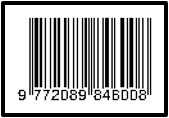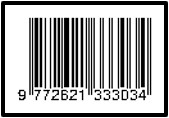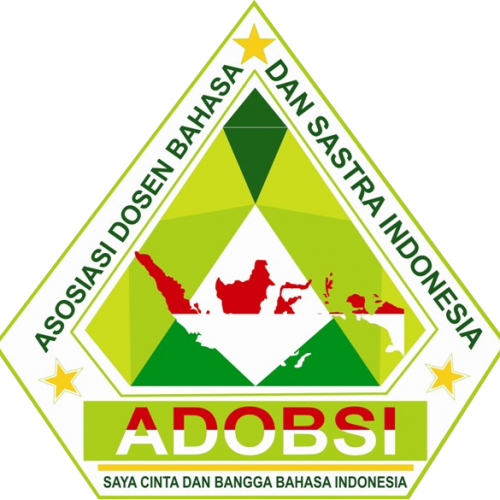Author Guidelines
A. Guidelines for Manuscript Writing
- Contains scientific texts in the fields of linguistics, literature, art, and teaching that focus on identity in linguistics, identity in literature, and identity in art, and language and art education.
- Must use the sample script journal templatethat has been provided.
- The manuscript is written in standard Indonesian according to the enhanced spelling and or standard English.
- Writing from the results of research, theoretical studies and application of theory. Manuscripts must be original (never published) and written by researchers or research teams using Indonesian or English.
- The manuscript is made on A4 size paper, typed with 1 (single) space using the Microsoft Word word processing program, Arial letter size 12.
- The procedures for writing the research results are arranged in the following order (according to the template): Title, Author's Identity, Abstract (in Indonesian and English), Introduction, Methods, Results and Discussion, Conclusions, Acknowledgments (optional) and Bibliography. Try the entire text of no more than 8-15 pages with no more than 5000 words.
- Title: Short and clear (no more than 15 words), written with capital letters.
- Author's Identity: The name is written in full (not abbreviated) without a title. If the address of the author's institution is different, then behind each name is an index of Arabic numerals. The author's address is written under the author's name, including the laboratory, institution, and complete address with telephone/facsimile number and e-mail. An additional index is given to authors who can be invited to correspond (corresponding author)
- Abstract: Written in Indonesian and English, if the Indonesian language script, and vice versa. Abstracts are equipped with key words sorted according to their importance. The abstract contains a summary of the manuscript, including all the writings without trying to detail each part. Avoid using abbreviations.
- Introduction: Contains the scope, background, objectives and benefits of research. This section should provide a background so the reader can understand and assess the results of the study without reading previous reports relating to the topic. Take advantage of libraries that can support the discussion.
- Methods: It should be described in detail and clearly about the materials used and the workings carried out, including statistical methods. The way the work is presented should contain sufficient information to enable the research to be repeated successfully.
- Results and Discussion: Presented together and discuss clearly the results of research. Can be presented in written form in a script, table, or picture. Reduce the use of graphics if this can be explained in the text. Limit the use of photos, present photos that clearly illustrate the results obtained. Figures and tables must be numbered and quoted in the manuscript. Photos can be sent in 4R size. The cost of loading color photos will be borne by the author. The graph of the results of data processing is sent in a separate file from the scientific manuscript file and is accompanied by the name of the program and the basic data for the preparation of the graph. The discussion presented should contain an interpretation of the results obtained and a discussion relating to previous research reports. It would be better if the reference used comes from the Journal. Avoid repeating statements that have been submitted on methods, results and other information that has been presented in the introduction.
- Conclusion: Presented separately from the results and discussion.
- Acknowledgments: Can be presented if deemed necessary. Aimed at funding research and giving awards to institutions and individuals who have helped research or the process of scientific writing.
- Bibliography: Arranged alphabetically by name and year of publication. Abbreviations of magazines / journals based on the procedures used by each journal. List of scientific journal / magazine references (last 10 years) at least 80% and text books 20%. Use the Mendeley application to help write the citation format (APA 7th edition).

- All manuscripts were reviewed in a blind-review by the reviewers appointed by the editor according to their expertise and the manuscript had met the tolerance limit of the percentage of plagiarism with online documents <= 20%. Script writers are given the opportunity to make improvements (revisions) of the manuscript based on recommendations / suggestions from bestari partners and implementing editors. Certainty of loading or rejection of the manuscript will be notified in writing via email.
B. Reference List Guidelines
To maintain consistency in writing reference lists, it is highly recommended that authors use standard reference management applications, one of which is Mendeley. Sources are written according to the style issued by the APA (American Psychological Association 6th edition). An example of writing a reference list is as follows.
Book
Johnson, M. (1998). Diabetes: Terapi Dan Pencegahannya. (J. F. Manulang, Ed.). Bandung: Indonesia Publishing House.
Arikunto, S. (2015). Penelitian Tindakan Kelas (Ed. Revisi). Jakarta: Bumi Aksara.
Print Journal Articel
Setyowati, D., & Widana, I. W. (2016). Pengaruh Minat, Kepercayaan Diri, Dan Kreativitas Belajar Terhadap Hasil Belajar Matematika. Emasains, 5(1), 66–72.
Adnan, Z., Abdullah, H. S., Ahmad, J., & Johari, J. (2017). Unveiling the Incidence of Interfirm Collaboration : Evidence from Research and Development Companies in Malaysia. Gadjah Mada International Journal of Business, 19(2), 123–144.
Online Journal Articel
Ariani, P., & Widana, I. (2017). PENGARUH AIR RENDAMAN JERAMI PADA OVITRAP TERHADAP JUMLAH TELUR NYAMUK DEMAM BERDARAH (Aedes sp) YANG TERPERANGKAP. Emasains, 5(1), 8-12. Retrieved from http://ojs.ikippgribali.ac.id/index.php/emasains/article/view/13
Dewi, I. (2015). PENYALAHGUNAAN ZAT TERLARANG (DOPING DAN NAPZA) SEBAGAI UPAYA PENINGKATAN STAMINA DALAM OLAHRAGA. Jurnal Pendidikan Kesehatan Rekreasi, 1(1), 15-19. Retrieved from http://ojs.ikippgribali.ac.id/index.php/jpkr/article/view/3
Website
Perdana, K. P. (2013). Identifikasi Sumber Informasi. Retrieved October 16, 2017, from http://lontar.ui.ac.id/il/2sumber.jsp?hal=1.
C. Manuscript Submission Guidelines
- Manuscripts are submitted via the Make a Submissions link on the right sidebar of this website by registering as a user first (if not already registered). If already registered, please log in to start submitting the manuscript.
- We do not serve manuscripts sent via e-mail, for those who are beginners in operating the Open Journal System (OJS) application, please see the OJS 3 Learning page.
- Authors are expected to include a short Curriculum Vitae and a clear address.
- Confirmation notification is loaded or not done via email.
















